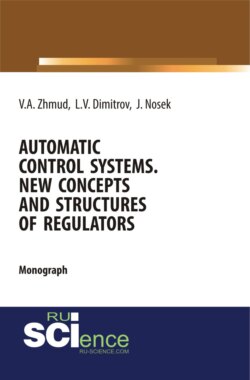Описание книги
The present study explores the possibility of achieving a commensurate or better result by a simpler controller in comparison with the well-known sophisticated methods of synthesizing PIλDμ-regulators. It is shown that these regulators are more complex than the well-known and successfully used PID-regulators. The possibility of achieving better results in an easier manner is demonstrated. The requirements for an ideal linear automatic control system in the form of an ideal amplitude-frequency characteristic are justified. The methods of designing such regulators are given and examples showing their advantage are presented. Criticism of nonanalytic methods for calculating controllers is also provided and the advantages of methods based on numerical optimization are justified. Also, the monograph discusses adaptive and self-adjusting systems from the new point of view. It gives modern classification based on modeling and analytical research. The monograph can be used as a textbook for full-time and part-time PhD- and Master-students in the fields of «Automation and Mechatronics» and «Control in Technical Systems». Key words: PID-regulator, feedback, control, automatics, dynamic error, static error, numerical optimization
